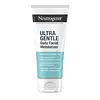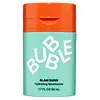What's inside
What's inside
 Key Ingredients
Key Ingredients

 Benefits
Benefits

 Concerns
Concerns

 Ingredients Side-by-side
Ingredients Side-by-side

Water
Skin ConditioningGlycerin
HumectantDicaprylyl Ether
EmollientCaprylic/Capric Triglyceride
MaskingNiacinamide
SmoothingCetyl Alcohol
EmollientCentella Asiatica Extract
CleansingPanthenol
Skin ConditioningTocopheryl Acetate
AntioxidantStearic Acid
CleansingPalmitic Acid
EmollientButylene Glycol
HumectantCaprylyl Glycol
EmollientCetearyl Alcohol
EmollientDimethicone
EmollientCeteareth-20
CleansingCarbomer
Emulsion StabilisingPhenoxyethanol
PreservativeChlorphenesin
AntimicrobialSodium Hydroxide
BufferingSodium Citrate
BufferingCitric Acid
BufferingWater, Glycerin, Dicaprylyl Ether, Caprylic/Capric Triglyceride, Niacinamide, Cetyl Alcohol, Centella Asiatica Extract, Panthenol, Tocopheryl Acetate, Stearic Acid, Palmitic Acid, Butylene Glycol, Caprylyl Glycol, Cetearyl Alcohol, Dimethicone, Ceteareth-20, Carbomer, Phenoxyethanol, Chlorphenesin, Sodium Hydroxide, Sodium Citrate, Citric Acid
Water
Skin ConditioningIsononyl Isononanoate
EmollientGlycerin
HumectantHeptyl Undecylenate
EmollientGlyceryl Stearate Citrate
EmollientCaprylic/Capric Triglyceride
MaskingPolyglyceryl-3 Stearate
EmulsifyingCetyl Alcohol
EmollientAloe Barbadensis Leaf Juice Powder
Skin ConditioningAcrylates/C10-30 Alkyl Acrylate Crosspolymer
Emulsion StabilisingPersea Gratissima Oil
Skin ConditioningButyrospermum Parkii Butter
Skin ConditioningGlucose
HumectantHydrolyzed Pea Protein
EmollientSodium Chloride
MaskingSodium Succinate
BufferingOenothera Biennis Oil
EmollientHoya Lacunosa Flower Extract
Skin ConditioningAnthemis Nobilis Flower Extract
MaskingHydrogenated Lecithin
EmulsifyingArginine
MaskingTocopheryl Acetate
AntioxidantTocopherol
AntioxidantSodium Phytate
Phenoxyethanol
PreservativeWater, Isononyl Isononanoate, Glycerin, Heptyl Undecylenate, Glyceryl Stearate Citrate, Caprylic/Capric Triglyceride, Polyglyceryl-3 Stearate, Cetyl Alcohol, Aloe Barbadensis Leaf Juice Powder, Acrylates/C10-30 Alkyl Acrylate Crosspolymer, Persea Gratissima Oil, Butyrospermum Parkii Butter, Glucose, Hydrolyzed Pea Protein, Sodium Chloride, Sodium Succinate, Oenothera Biennis Oil, Hoya Lacunosa Flower Extract, Anthemis Nobilis Flower Extract, Hydrogenated Lecithin, Arginine, Tocopheryl Acetate, Tocopherol, Sodium Phytate, Phenoxyethanol
 Reviews
Reviews

Ingredients Explained
These ingredients are found in both products.
Ingredients higher up in an ingredient list are typically present in a larger amount.
This ingredient is an emollient, solvent, and texture enhancer. It is considered a skin-softener by helping the skin prevent moisture loss.
It helps thicken a product's formula and makes it easier to spread by dissolving clumping compounds.
Caprylic Triglyceride is made by combining glycerin with coconut oil, forming a clear liquid.
While there is an assumption Caprylic Triglyceride can clog pores due to it being derived from coconut oil, there is no research supporting this.
Learn more about Caprylic/Capric TriglycerideCetyl Alcohol is a fatty alcohol. Fatty Alcohols are most often used as an emollient or to thicken a product.
Its main roles are:
Though it has "alcohol" in the name, it is not related to denatured alcohol or ethyl alcohol.
The FDA allows products labeled "alcohol-free" to have fatty alcohols.
Learn more about Cetyl AlcoholGlycerin is already naturally found in your skin. It helps moisturize and protect your skin.
A study from 2016 found glycerin to be more effective as a humectant than AHAs and hyaluronic acid.
As a humectant, it helps the skin stay hydrated by pulling moisture to your skin. The low molecular weight of glycerin allows it to pull moisture into the deeper layers of your skin.
Hydrated skin improves your skin barrier; Your skin barrier helps protect against irritants and bacteria.
Glycerin has also been found to have antimicrobial and antiviral properties. Due to these properties, glycerin is often used in wound and burn treatments.
In cosmetics, glycerin is usually derived from plants such as soybean or palm. However, it can also be sourced from animals, such as tallow or animal fat.
This ingredient is organic, colorless, odorless, and non-toxic.
Glycerin is the name for this ingredient in American English. British English uses Glycerol/Glycerine.
Learn more about GlycerinPhenoxyethanol is a preservative that has germicide, antimicrobial, and aromatic properties. Studies show that phenoxyethanol can prevent microbial growth. By itself, it has a scent that is similar to that of a rose.
It's often used in formulations along with Caprylyl Glycol to preserve the shelf life of products.
Tocopheryl Acetate is AKA Vitamin E. It is an antioxidant and protects your skin from free radicals. Free radicals damage the skin by breaking down collagen.
One study found using Tocopheryl Acetate with Vitamin C decreased the number of sunburned cells.
Tocopheryl Acetate is commonly found in both skincare and dietary supplements.
Learn more about Tocopheryl AcetateWater. It's the most common cosmetic ingredient of all. You'll usually see it at the top of ingredient lists, meaning that it makes up the largest part of the product.
So why is it so popular? Water most often acts as a solvent - this means that it helps dissolve other ingredients into the formulation.
You'll also recognize water as that liquid we all need to stay alive. If you see this, drink a glass of water. Stay hydrated!
Learn more about Water